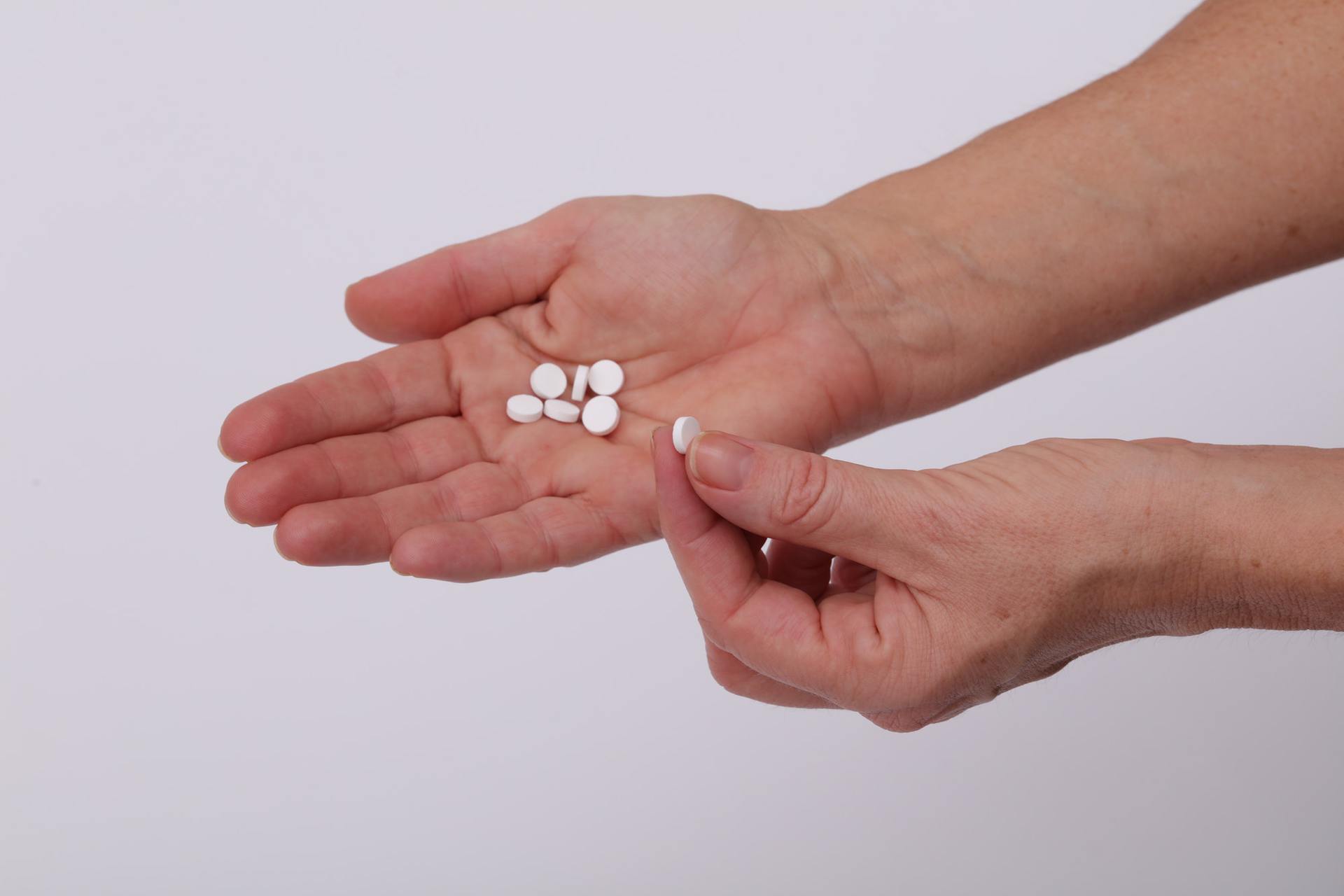MDMA, also known as ecstasy or molly, is a popular party drug that is known for its euphoric effects. When taken, MDMA produces a variety of cognitive, physical, and emotional symptoms. It influences perception and makes people temporarily feel more connected to each other. In many ways, MDMA is similar to many stimulant drugs as well as hallucinogenic drugs. As a recreational substance, MDMA is particularly popular among young people. However, MDMA abuse can quickly lead to addiction and a variety of physical and mental health problems

On This Page:
What is MDMA?
MDMA stands for 3,4-methylenedioxy-methamphetamine. It is a synthetic drug that affects mood and perception, changing a person’s feelings and their awareness of surrounding conditions and objects. On a chemical level, MDMA is similar to both hallucinogens and stimulants. It produces strong feelings of pleasure, energy, emotional warmth, and distorted time and sensory perception. Since MDMA increases people’s energy and their receptivity to other people, it is no surprise that it is a popular drug in the nightclub scenes. All-night dance parties, raves, and after-hours events frequently involve heavy MDMA abuse. However, in recent years MDMA has become more broadly popular as a drug of abuse outside of the nightclub scene.
MDMA comes in many forms and goes by many names. Young people often refer to it as molly and ecstasy. The word “ecstasy” is generally used interchangeably with “MDMA,” though ecstasy is most commonly used as a street name for MDMA. Ecstasy is generally sold as a designer version of MDMA, and it is frequently packaged in tablet or pill form. Molly, on the other hand, is most commonly sold as a crystal-like substance or white powder. Drug dealers often market molly as a “pure” form of MDMA. In general, though, it is a mere misconception that molly is somehow purer or more potent than other formulations of MDMA. In actual fact, almost all forms of MDMA sold on the street are impure. Drug dealers frequently add contaminants to their products in order to make them appear more powerful.
Molly, ecstasy, and MDMA are frequently cut with a wide range of ingredients which include:
It is difficult to find MDMA in its pure form. However, MDMA is sometimes used in its pure form in highly supervised medical settings. It has shown preliminary promise in helping treat people who suffer from major depressive disorder and post-traumatic stress disorder (PTSD). However, it is important to note that these trials of therapeutic MDMA involve a great deal of supervision, control, and the drug is used to support ongoing behavioral therapy — it is not a replacement for therapy. Individuals who use MDMA recreationally are likely, in fact, to end up making their mental health problems worse, not better.
Due to its high potential for abuse and addiction, MDMA is classified as a Schedule I Controlled Substance by the United States Drug Enforcement Administration (DEA).
Side Effects of MDMA Abuse
When people take molly, ecstasy, or MDMA, they often do so to experience feelings of happiness, well-being, motivation, and friendliness. MDMA provides people with the illusion as well that their senses of sound, sight, smell, and touch have been “improved.” It is common for people at nightclubs or after-hours events to seek out these enhanced sensory experiences. In the short term, MDMA abuse can feel quite pleasant. The effects of an MDMA high include:
- Euphoria
- Relaxation and calmness
- Heightened senses
- Lowered inhibitions
- Long-lasting energy
- Increased empathy for others
However, not all of the effects of MDMA are so positive. Abusing MDMA even once can lead to a wide variety of harmful physical and cognitive effects. Some common short term side effects of abusing MDMA include:
- Muscle cramping
- Nausea
- Involuntary teeth clenching
- Sweating
- Chills
- Blurred vision
The effects of MDMA generally last between 3 to 6 hours. However, many people remain intoxicated far longer by taking a second dose before the effects of the first dose have begun to fade. Doing so dramatically increases the risk that a person will suffer from negative effects.
MDMA Withdrawal Effects
While the ecstasy high lasts for only a few hours, the withdrawal effects, or “crash,” last far longer. Over the course of the following week, individuals are likely to experience effects that are the polar opposite of an MDMA high. While the feeling of being intoxicated on MDMA causes euphoria and a burst of energy, MDMA withdrawal can make people feel depressed and sluggish. Often the symptoms are so severe that an individual may find it quite difficult to function at all.
Common symptoms of MDMA withdrawal include:
- Impulsiveness and aggression
- Irritability
- Sleep problems
- Depression
- Anxiety
- Memory and attention problems
- Decreased interest in or pleasure from sex
- Decreased appetite
Individuals who abuse other drugs alongside MDMA are likely to suffer from additional complications. Since most MDMA contains contaminants, this means that the majority of MDMA users suffer effects considerably more severe than those listed above. Some of these effects can be life-threatening.
Signs and Symptoms of MDMA Abuse
Young people often try their hardest to avoid having their substance abuse detected. They may fear that if parents or other authority figures find out, then they’ll have to stop. Individuals who suffer from MDMA addiction are likely to be even more careful about detection. MDMA abuse can be difficult to detect because it is generally consumed at social events rather than at home. However, the signs and symptoms of MDMA abuse always make themselves apparent no matter how hard a person tries to conceal their problem.
Understanding these signs and symptoms of MDMA addiction are crucial to recognizing a budding substance use disorder. In many cases, it should be noted, people experience these effects as a result of combining MDMA with other substances, such as alcohol, marijuana, cocaine, or prescription painkillers. In fact, individuals who abuse MDMA are more likely to abuse other drugs, since the drug makes people trust others more. This trust can cause people to accept drugs or drinks from other people that they would otherwise reject.
Behavioral Changes Caused by MDMA
When people misuse and abuse MDMA, their behavior is likely to change considerably. This is true while they are intoxicated, obviously, but their behavior is likely to change as well in the subsequent days as they recover from their experience. Being able to recognize these behavioral changes is important for knowing when to address an MDMA abuse disorder.
One important behavior to look out for is a change in social behavior. Ecstasy, molly, and MDMA are most commonly abused at nightclubs, after-hours events, and raves. If your adult child has begun frequenting these types of events and hanging out with a new social group, there is nothing inherently wrong with that, but it is worth keeping an eye out for other behaviors. Other common behavioral changes caused by MDMA include:
- Losing interest in activities or hobbies
- Hostile mood
- Sleep disturbances
- Worsening performance at work or school
- Uncooperative attitude
Since MDMA increases trust and feelings of connection, and because it is generally consumed at nightclubs, it is common for people abusing MDMA to become more sexually active. MDMA is also often abused alongside sildenafil (Viagra). MDMA and Viagra can be a dangerous combination, since intoxication combined with an increased sex drive can cause people to take sexual risks. This can expose them to an increased danger of assault, unwanted pregnancy, and sexually transmitted infections (STIs).
Psychological Effects of MDMA Abuse
Individuals who abuse MDMA are particularly susceptible to cognitive problems and mental health disorders. In fact, MDMA abuse dramatically increases the likelihood that an individual will develop a mental health disorder. It can also worsen the symptoms of pre-existing mental illnesses. Mental health disorders commonly linked to ecstasy abuse include depression and anxiety. While MDMA can temporarily lift a person’s spirits, they can easily grow reliant on the positive feelings that MDMA generates. When MDMA is processed by the body and leaves a person’s system, the body is unable to produce enough serotonin. Serotonin is a neurotransmitter that is responsible for giving people a sense of well-being. In the absence of MDMA, regular ecstasy abuses are likely to find themselves overwhelmed by negative emotions and thoughts.
How Long Does MDMA Last in a Person’s System?
After a person takes a dose of MDMA, they can generally expect the short term effects to last approximately 3 to 6 hours. In practice, an individual may remain intoxicated for far longer, since it is common for MDMA abusers to take multiple doses in a single night in order to prolong the experience. The length of the actual MDMA high is determined by the behavior of the person taking the drug. At a certain point, however, taking further doses provides diminishing returns, since MDMA abuse depletes the brain’s supply of serotonin.
After the high wears off, MDMA withdrawal symptoms begin to set in. Users are likely to experience cognitive problems, mood disturbances, and behavioral changes. The symptoms of ecstasy withdrawal are the polar opposite of what people experience while intoxicated. Rather than feeling bursts of energy, people are likely to feel sluggish. Rather than feeling extroverted and empathetic, people are likely to feel depressed and have a strong urge to isolate. For people taking high doses of ecstasy or combining ecstasy with other drugs, these symptoms can not only be debilitating, they can be dangerous.
The half-life of MDMA is generally eight hours. This means that 50% of MDMA is excreted from the body eight hours after the last dose is taken. However, metabolizing MDMA completely takes a bit longer. It is estimated that after 40 hours most people have metabolized 95% of the MDMA in their bodies.
How Long Can MDMA Be Detected on a Drug Test?
After a person takes MDMA, it is quickly absorbed by the intestinal tract. After a few hours, the body begins breaking it down in the liver. There, it is converted into chemical compounds known as metabolites. These MDMA byproducts are excreted by the body over a long period of time. The vast majority of drug tests aim to measure the presence of MDMA metabolites. However, there are a wide variety of different drug tests available, each with its own advantages and disadvantages.
MDMA urine tests are generally recommended for most people. The most widely available and affordable type of drug test kit is the urine test. MDMA can be detected in urine up to three days after a person takes the drug. However, it generally takes a few hours before MDMA metabolites can be found in the liver at all — so testing too soon can give a false negative even if a person just used MDMA! Recent studies have also shown that there is wide variability in terms of how long MDMA can be detected in the liver. While 3 days is the average, people who have very alkaline urine (higher pH urine) take longer to excrete all the metabolites in their body.
MDMA blood tests have the advantage of being able to detect MDMA almost immediately after the drug has been taken. However, they have a shorter detection window than urine tests. Most blood tests fail to detect MDMA after one or two days. These tests are also more expensive and time-consuming than urine tests.
MDMA saliva tests are the least reliable detection method for MDMA. The peak concentration of MDMA in saliva occurs between one and three hours after the drug is consumed. After that, it is difficult for saliva tests to detect MDMA. While small traces can be found in saliva for up to two days after ecstasy is taken, saliva tests often give false negatives.
MDMA hair tests are the most reliable way of testing for MDMA abuse. After a person abuses MDMA, drug metabolites actually enter the base of hair follicles. Each hair follicle, therefore, provides a history of a person’s drug use. Since most people grow approximately 1 centimeter of hair a month, this history can extend back many months. However, MDMA hair tests can be subverted by simply cutting one’s hair! It is also often difficult for testers to determine exactly when a person used ecstasy. If a person has long hair, a positive test result can arise if they used ecstasy just once many months prior.
Can You Get Addicted to MDMA?
Researchers have not definitively answered the question of whether or not MDMA is physically addictive. However, they do know that it shares many properties with other physically addictive drugs — and that in practice many people do become addicted to MDMA. Studies on rats have shown that when given the opportunity, most rats choose to self-administer MDMA. While they do so to a lesser extent than they do with cocaine, the practice of self-administration is a reliable sign that a drug has addictive potential.
MDMA affects many of the same neurotransmitter systems in the brain that other addictive drugs target. When a person takes MDMA, they experience a surge of dopamine and serotonin in their brains. These neurotransmitters are responsible for the feelings of ecstasy and well-being that MDMA abuse gives rise to, but they are also responsible for reinforcing behavior. Regular use of MDMA causes adaptations in the brain’s serotonin and dopamine systems. These kinds of adaptations are associated with substance use disorders and increased impulsivity.
Regardless of how MDMA addiction develops, what we do know for sure is that MDMA abuse often does lead to addiction. Individuals who develop a substance use disorder involving MDMA or other drugs are likely to find it difficult to stop using even when they want to do so. They may recognize the negative consequences of continued MDMA abuse but be unable to manage their drug use. Since substance use disorders are mental health conditions, many sufferers continue to experience cravings even after successfully physically withdrawing from the drug. Unless they seek outside help, they are likely to relapse.
Long Term Dangers of MDMA Abuse and Addiction
- Long-lasting brain damage
- Impaired functioning in areas of the brain that control learning, sleep, and emotion
- Depression, anxiety, and other mental health disorders
- Memory loss
- Degenerated nerve endings and nerve branches
- Hemorrhaging
- Kidney failure
- Psychosis
- Convulsions
- Cardiovascular collapse
- Death
Can You Overdose on MDMA?
According to the Substance Abuse and Mental Health Services Administration (SAMHSA), approximately 10,000 young people under the age of 21 go to emergency rooms each year due to MDMA overdoses. However, the term “MDMA overdose” is somewhat misleading. The life-threatening consequences of MDMA abuse actually come about as an indirect result of MDMA’s side effects.
Most deaths due to ecstasy, molly, or MDMA occur when a person’s body overheats. MDMA interferes with the mechanisms in the body that regulate temperature. Given that MDMA is generally taken in crowded and hot environments where people are dancing and engaging in vigorous physical activity, the risk of overheating is particularly high. This spike in body temperature, known as hyperthermia, can cause life-sustaining body functions to shut down. Individuals suffering from hyperthermia are at a high risk of the following:
- Swelling of the brain
- Dehydration
- Muscle breakdown
- Electrolyte imbalances
- Kidney failure
- Liver failure
- Heart failure
- Death
However, it is also possible to overdose on ecstasy directly. This is because most MDMA is actually combined with other drugs. MDMA is likely to be laced with ketamine, cocaine, methamphetamine, bath salts, or other dangerous substances. When a person takes too much MDMA, they can experience a life-threatening overdose on any one of these other substances.
Recovery is Possible at Design for Recovery
MDMA became popular in the 1980s as part of the club scene, but today MDMA abuse is increasingly mainstream. Highschoolers and college students abuse ecstasy widely, often operating under the assumption that it is a relatively safe party drug. While the drug may cause temporary feelings of ecstasy and interpersonal connection, in the long term it leads to depression and isolation. In many cases, it leads to overdose and death. If you or a loved one is suffering from the consequences of MDMA abuse or addiction, it is essential to get outside help.
Design for Recovery, a sober living home for men in West Los Angeles, provides a safe and supportive environment for people to recover from substance use disorders and rebuild their lives. But they don’t do it alone: Design for Recovery helps young men who are hopeless, isolated, and addicted build strong sober social support systems that studies show help people stay drug and alcohol-free over the long term. Our compassionate staff work with young men to help them develop new values, tools, and coping strategies to avert potential relapses. Moreover, we believe that physical sobriety is only half the battle. While residing at Design for Recovery, young men work to rebuild their lives from the ground up, starting academic programs or new careers and putting their newfound sober skills into practice. We believe that everything people seek from MDMA abuse, such as joy and connection to others, can be found in sobriety.
If you are ready to put down MDMA and begin a new way of living, remember that you don’t have to do it alone. Contact Design for Recovery today. We’re here for you.
Share this :

























